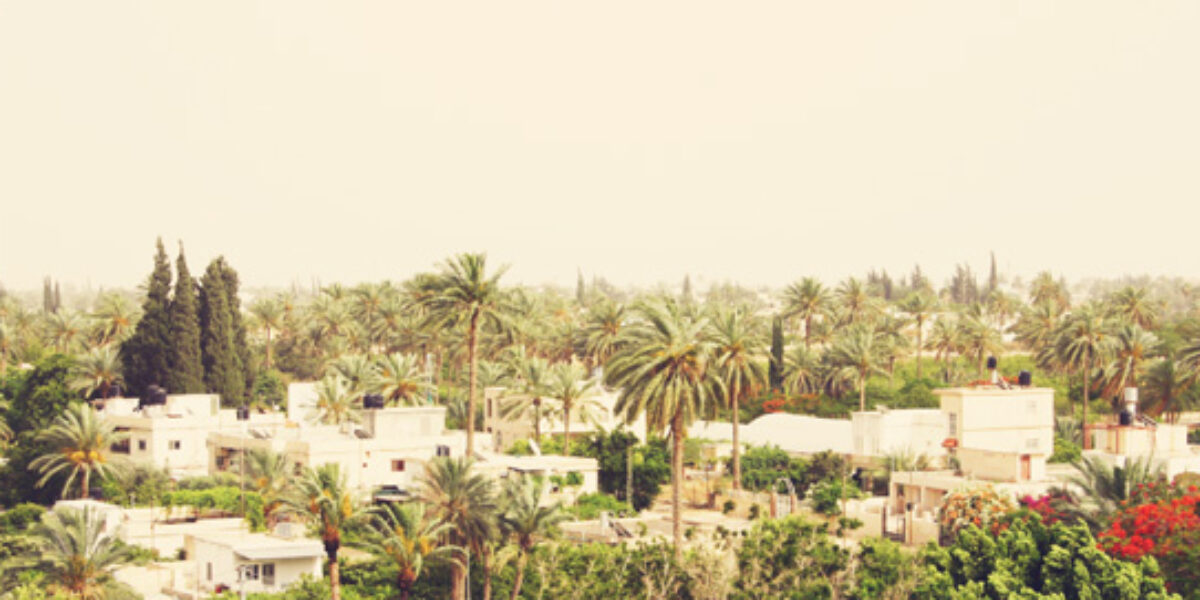Jericho is located near the southern end of the Jordan Valley. It has been an oasis and a population center in the otherwise mostly barren valley. Some scholars think Jericho is the oldest continuously inhabited city in the world.
Jericho is located near the southern end of the Jordan Valley about eight hundred twenty-five feet below the level of the Mediterranean Sea and about two hundred feet above the surface of the Dead Sea. The area around it is watered by springs and small streams, and since 7000 B.C. Jericho has been an oasis and a population center in the otherwise mostly barren valley. Some scholars think Jericho is the oldest continuously inhabited city in the world, and it was called the city of palm trees in Judges 1.16. Intersecting there since historic times have been a major road that comes down the Jordan Valley, one that crosses the Jordan River (five miles east of Jericho), and one that leads up through the steep, barren hills to Jerusalem, which is fifteen miles to the southwest and more than two thousand feet higher than Jericho.
Jericho had high walls and protective towers in ancient times, as it did when Joshua led the people of Israel across the Jordan River on their way to occupy what became their land. But the city was built of sun-dried mud bricks, so it was often invaded and captured by enemies. These ancient bricks have mostly washed away, and so archaeologists are not sure which part of the city was standing when Joshua captured it (Josh 6).
Elijah went through Jericho and met fifty prophets, who followed him to the Jordan River just before he was taken up to heaven (2 Kgs 4.4–12). Elisha began his work as a prophet in Jericho (2 Kgs 4.13–22). When Jerusalem was destroyed by the Babylonians in 586/587 B.C., King Zedekiah tried to run away, but the Babylonians caught him and put out his eyes on the plains near Jericho (Jer 52.1–11). After the Jews were allowed by the Persians to come back from Babylonia to their land, a number of those whose families were originally from Jericho returned (Ezra 2.34), and some of the workers who rebuilt the walls of Jerusalem came from Jericho (Neh 3.2).
The Romans made Herod king of the Jews in 37 B.C., and he then built a winter palace for himself and a Roman-style city just northwest of ancient Jericho. Water was brought in from the Jordan River by an irrigation system. Herod’s new Jericho included a city center, a theater, and a stadium, and the city was surrounded by groves of evergreen and palm trees with flower gardens, fountains, and pools. It was the winter residence for Herod, his staff, and a large group of servants and supporters.
East of Jericho along the Jordan River was the place where John the Baptist stayed to baptize those who heard his message and were preparing themselves for the coming of God’s new kingdom. Jesus was also baptized there (Luke 3.1–22), and later he visited Jericho—apparently the old city, not the palace of Herod. In Jericho Jesus healed a blind man (Luke 18.35–43), and he met and stayed with Zacchaeus, the rich chief tax collector for the Romans (Luke 19.1–10). Jesus’ parable of the Good Samaritan tells a story that takes place on the steep and rocky road that led down from Jerusalem to Jericho (Luke 10.25–37).




